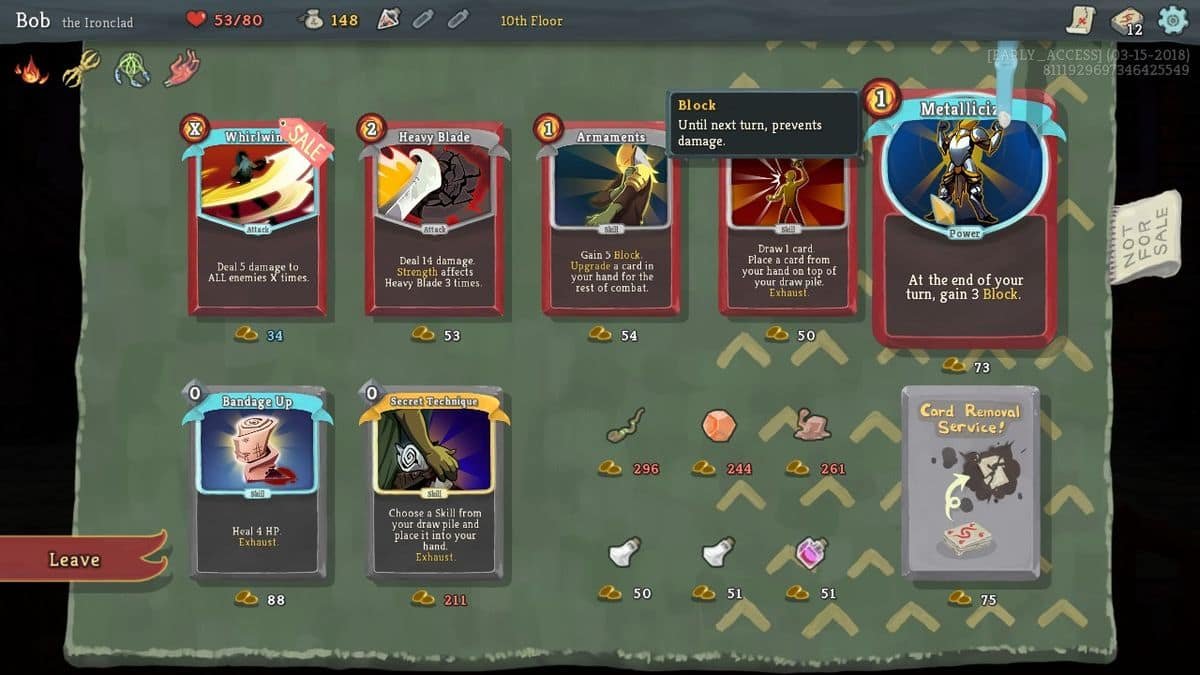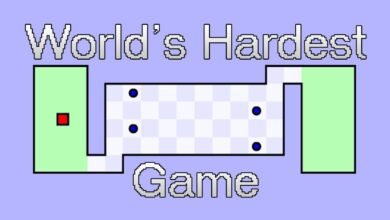
Top Slay the Spire Tips to Win More Runs Like a Pro
Understand the Core: Deckbuilding Fundamentals
Mastering Slay the Spire tips starts with strong deckbuilding. Early in a run, ditch weak starting cards (Strikes/Defends) and focus on building a lean, high-impact deck. A streamlined deck improves draw consistency and enables smoother turn-to-turn plays. Aim for 15–25 quality cards by mid-Act 2. This provides you with sufficient options without compromising your strategy. Always ask: Does this card contribute to my current synergy? If not, pass.
Having a reliable deck not only gets you through Act 1 but also enables you to withstand rare, stronger relics at a later stage. The artefacts, which are highly aggressive or ultra-protective, obtained from relics, are the main things for the mid- and late game. Quality over quantity matters. One well-chosen card like Noxious Fumes or Whirlwind can define a win.
Prioritize Elite Battles but Strategically
One of the most consistent Slay the Spire tips is to fight elites. These stronger enemies drop relics, gold, and keys if defeated. Most players aim for two to three elites per act to strike a balance between risk and reward. But elite fights aren’t mandatory. Study the Spire map carefully. If there’s an elite path with a shop or rest opportunity, go for it. If multiple elites are chained with no respite, skip one to preserve HP.
Your goal is to face elites when your deck and relic pooling allow a decent success chance. If your deck deals consistent single-target and block damage, elite fights become relatively safe and high-reward.
Know When to Upgrade vs. Heal
Campfires provide two choices: Heal or upgrade. Use this decision to propel your run. A good rule of thumb is:
- If you’re above 70% HP, upgrade a key card to boost damage or utility.
- If you’re below 50 to 60% HP, heal to stay safe before elites or bosses.
Upgrades often yield bigger long-term benefits than small heals. For example, upgrading Heavy Blade or Glass Knife can redefine your deck’s scaling. But low HP is a run killer, so don’t hesitate to heal when needed.
-
Build Around Strong Synergies
Synergy is central to advanced Slay the Spire tips. Don’t just pick strong cards. Choose ones that mesh well. Some examples include:
- Poison decks for Silent: Noxious Fumes, Catalyst, and Deadly Poison.
- Strength builds for Ironclad: Limit Break, Spot Weakness, and Inflame.
- Energy engines for Defect: Duplex, Electrodynamics, and Defragment.
Focusing on synergy helps you cut weak cards and stay on course. If you splinter into multiple archetypes, you risk having a bloated deck. Good synergy also leads to stronger relic interactions, such as pairing Dexterity boosts with high armor cards.

Maintain Flexible, Threat‑Aware Tactics
Slay the Spire tips emphasize flexibility. Never commit prematurely to one strategy. As enemies appear, adjust your tactics accordingly.
- Against multi-hit enemies like Book of Stabbing, focus on Dexterity and block cards.
- Against single-target bruisers, equip strong attacks like Perfected Strike or Bash plus Strength combos.
Imagining the boss mechanics (eg, The Guardian block phase, Slime splitting) can be one way to help you take the right relics and cards. You are free always to switch at any time; this is the best choice. This type of changeability is the most important thing that makes or breaks the run.
-
Manage Your Gold Smartly
Gold is more than just currency; it’s the currency of choice and opportunity. Good Slay the Spire tips suggest saving up 200 to 300 gold before major shops. That buffer allows for:
- Buying critical relics or rare cards.
- Removing weaker options to improve deck flow.
- Picking up potions to survive elites or bosses.
Skip shops that offer little value. Sometimes it’s smarter to walk away than to buy a mediocre card. Choose upgrades, card removal, or potions based on what strengthens your current deck direction.
-
Potions and Relics: Small Tools, Big Impact
Potions often make the difference between a clean win and a crushing loss. Carry the strongest ones into boss fights: Dexterity, Block, Strength, and Explosive Potions are all high-impact options. Used well, they can swing a fight entirely in your favor.
Evaluate relics carefully too. Priority depends on your character and current synergy:
- For Ironclad, look for Strength or healing relics like Burning Blood.
- For Silent, focus on Poison or Shiv-related relics.
- For Defect, seek Orb capacity or Focus-boosting relics.
Skip relics that conflict with your build. Not every shiny item is helpful. Focus on those that enhance what your deck is already doing well.
-
Ascension Planning and Scaling
Once you reach Ascension levels, small missteps add up quickly. Apply these advanced Slay the Spire tips to thrive in tougher conditions.
- Plan your deck around scaling strategies instead of flat power spikes.
- Select relics and upgrades that remain useful in the long term.
- Avoid short-term tricks that lose effectiveness by Act 3.
Ascension success is about building for consistency. The more your deck grows in Strength while enemies scale up, the higher your odds of success.
-
Map Awareness and Risk Management
The map is your battlefield. Select paths that strike a balance between rewards, healing, and risk. Don’t just take the first path that appears. Instead:
- Target elites only when you can follow them with a rest site or shop.
- Chain event rooms and question marks to reduce combat.
- Take safe routes if your deck is weak or HP is low.
Smart map planning reduces your chances of surprise deaths. It also ensures you’re better prepared for each act’s boss encounter.

Learn from Every Run
Finally, even failed runs are learning opportunities. Team evident Slay the Spire guidance often contains this particular fact: with each game, you are learning from it. Remember to ask what.
- Which cards underperformed?
- Where did I take the most damage?
- Was my deck too big or unfocused?
Every time you judge your decisions, not only do you get your instinct ready for potential future runs, but also you become a master of all your errors – be they carrying a relic by chance, a combination that does not work, or choosing a bad path to face an elite. However, each of these missteps paves the way for the later successful trials.




